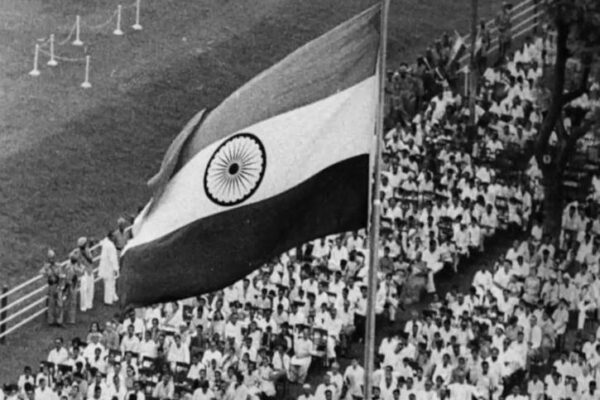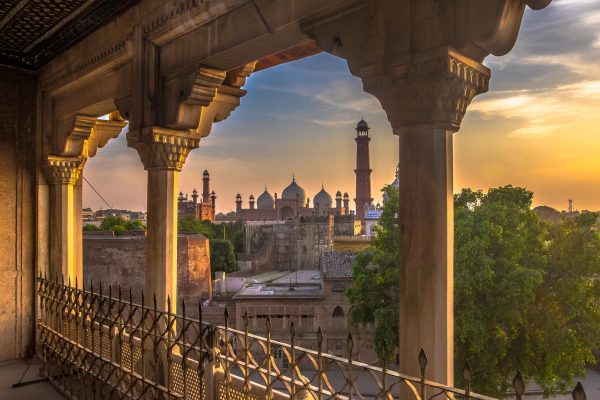With the Crown Prince of UAE Muhammed bin Zayed as the chief guest of the Indian republic day celebrations in 2017, Narendra Modi strode an extra mile towards cementing the ties with UAE, while MBS was invited on an official visit to India in February 2019.
With the Crown Prince of UAE Muhammed bin Zayed as the chief guest of the Indian republic day celebrations in 2017, Narendra Modi strode an extra mile towards cementing the ties with UAE, while MBS was invited on an official visit to India in February 2019.
The moment Saudi Arabia’s foreign minister Prince Faisal bin Farhan landed in Islamabad on 26 December 2019, the “bromance” story of Saudi Crown Prince Mohammed bin Salman (MBS) and Indian Prime Minister Narendra Modi came to an abrupt end. The aggressive diplomacy India has been pursuing in the Middle East under Narendra Modi’s watch may suffer as a consequence.
Building up ties with the Gulf, and loosening them with Iran
Earlier in April 2016, Narendra Modi had been conferred with the highest civilian honour of Saudi Arabia, with the UAE and Bahrain following suit. The incremental building up of the relationship between India and the Gulf nations was seemingly at odds with Modi’s domestic policy, however. On the one hand, he unflinchingly unleashed the right wing agenda of his ruling Bharatiya Janata Party (BJP) at a national level, through which he has unscrupulously targeted Indian Muslims. On the other, he dallied with Arab rulers on all international forums, inviting them one after another to the red carpet of New Delhi.
By doing this, Narendra Modi was astutely attempting to boost the sinking Indian economy with the help of Arab investment. With the Crown Prince of UAE Muhammed bin Zayed as the chief guest of the Indian republic day celebrations in 2017, Narendra Modi strode an extra mile towards cementing the ties with UAE, while MBS was invited on an official visit to India in February 2019. Together, both countries have committed an investment of billions of dollars in the petrochemical industry at Ratnagiri of Maharashtra state.
This “bromance” went to the extent of travelling both foreign ministers of Saudi Arabia and the UAE on the same plane to Islamabad to pacify Imran Khan’s government and its stance on Kashmir, which remains a burning issue for both Pakistan and India.
India has also scaled down its bilateral relations with Iran scrupulously on the pretext of adhering to US sanctions, by drastically reducing its oil imports to zero and leaving the developmental activities at Chahabar port of Iran in the lurch. Iran was one of the largest oil suppliers of India, and both sides continued to lend support to each other in spite of any previous capricious weather the region had passed through. That was until the Modi government started playing ‘smart diplomacy’ with the Gulf nations. Earlier, Iran had granted India its permission to develop the Chahabar port on the Gulf of Oman to further its trade ambitions with Central Asia.
The response from Pakistan
Imran Khan on the other side triggered the issue of Kashmir on all international forums, including the United Nations Security Council via proxies like China, a close ally of Pakistan, and Turkey. He hosted Iran’s Javad Zarif shortly after US drones assassinated Qassem Suleimani, signposting his lack of subservience to the Saudi block.
It is a long standing concern of India’s that the Organisation of Islamic Cooperation (OIC) (headquartered in Saudi Arabia) will take the side of Pakistan against India on all matters related to Kashmir and the Muslim community in the Indian subcontinent. In the past, the statements and press releases issued on behalf of OIC have caused an impasse with Indian diplomats who have wanted to further the cause of annexing Kashmir to the Indian mainland. However, the upward trajectory in the relationship with the Gulf countries has helped India to prevent the tilting of the OIC towards Pakistan, so much so that in the ministerial summit held in Abu Dhabi in March 2019, the then foreign minister of India Mrs. Sushama Swaraj was invited and participated for the first time in the history of the OIC. This was despite Pakistan’s strong objections, which were overruled by UAE.
Pakistan in turn inclined towards the new Islamic axis headed by Turkey and Malaysia with Qatar on board to dishearten Saudi Arabia, and in particular MBS, who wanted Pakistan to be excluded from any new axis. Imran Khan knows well that MBS and Saudi Arabia would be on the losing side with a new Islamic axis on the launching pads.
There were reports of bin Salman’s hell-bent efforts to turn this new axis into a damp squib from the outset. This reportedly took the form of a technical glitch to the private jet of MBS while Khan boarded it to fly back home from the US after attending the last UN General Assembly. Earlier, Khan visited Saudi Arabia enroute to the US on a commercial flight in order to decrease travel expenditure of foreign trips, being cognisant of the difficulties facing the Pakistan economy. Mohammed bin Salman had invited Khan to board his private jet to the US as a part of warm gesture.
However, much to the dislike of MBS, Imran Khan along with Mahatir Muhammed and Erdogan convened a trilateral meeting on the side-lines of UN General Assembly and announced the urgency of establishing an Islamic TV channel. This would be a move which stands beyond the ken of Mohammed bin Salman’s “modern Islamic world”.
Prince Faisal bin Farhan, at the special request of Mohammed bin Salman, called on Khan on 26 December 2019 to confirm that the next OIC meeting held in Islamabad would have Kashmir and the CAA (a new citizenship law passed by Indian parliament which has the effect of taking away the citizenship of Muslims away and degrades them to second-class citizens) at the top of agenda. This has accumulated into India realising that Saudi Arabia can only watch India through the lens of Pakistan, though it seems now that it may be short-lived.





